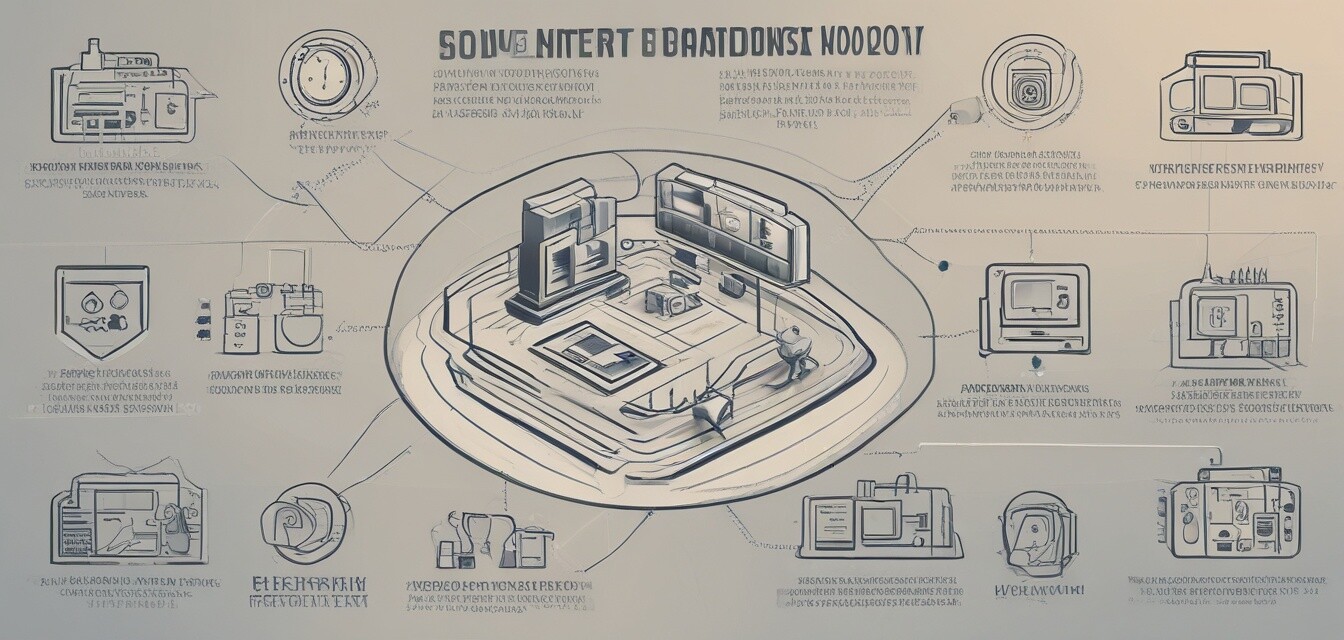
Quick Steps to Troubleshoot Slow Internet
Key Takeaways
- Identify the cause of slow internet by testing speed and connectivity.
- Check all cables and settings for your modem and router.
- Reduce interference by relocating devices and upgrading equipment if necessary.
- Consider changing settings or contacting your ISP for better performance.
- Regularly updating your network security can help maintain speed.
Experiencing slow internet can be incredibly frustrating, whether you’re streaming, working from home, or just browsing the web. In this guide, we will cover essential troubleshooting steps that allow you to quickly identify and address the issues affecting your internet speed. Let’s get started!
Step 1: Conduct a Speed Test
The first thing you should do is determine your current internet speed. A speed test will help identify whether the problem lies with your connection or the service provided by your Internet Service Provider (ISP).
To conduct a speed test, you can use a trusted website like Speedtest.net or any similar service. Note the results and compare them to your plan's advertised speeds.
What to look for:
- Ping: The response time of your connection (lower is better).
- Download Speed: How quickly data travels to your device (measured in Mbps).
- Upload Speed: How quickly data travels from your device (also measured in Mbps).
Step 2: Check Your Connections
Loose cables or improperly connected devices are common causes of slow internet. Check the following:
- Ensure that all cables are securely plugged in, especially the Ethernet cable connecting your router to the modem.
- Inspect all cables for visible damage.
- Make sure your modem and router are receiving power and show normal operational lights.
Step 3: Reboot Your Modem and Router
Sometimes, a simple reset can solve what seems like a significant issue. Turn off both your modem and router, wait about 30 seconds, then turn them back on in the following order:
- Plug in the modem and wait for it to fully start (indicator lights will stabilize).
- Turn on the router.
Step 4: Optimize Wi-Fi Signal
If you're using Wi-Fi, the signal strength can greatly affect your speed. Consider these optimization tips:
- Place your router in a central location in your home.
- Keep the router away from walls and obstructions.
- Avoid interference from microwaves, cordless phones, and other electronics.
- Limit the number of devices connected to your network during heavy usage times.
Possible Upgrades:
| Router Type | Benefits |
|---|---|
| Dual-Band Routers | Offer both 2.4 GHz and 5 GHz bands for better signal management. |
| Mesh Systems | Provide extensive coverage and eliminate dead zones. |
Step 5: Check for Network Congestion
Heavy usage can cause slowdowns. Keep track of when you're experiencing slower speeds:
- Are there multiple users streaming videos or gaming at the same time?
- Check if you have scheduled downloads or updates running in the background.
Step 6: Update Firmware and Drivers
Ensure your modem, router, and connected devices are running the latest firmware and drivers. Manufacturers frequently release updates that improve performance and stability.
How to check for updates:
- Log into your router's web interface (commonly found at 192.168.1.1).
- Navigate to the firmware section to check for updates.
- Visit the manufacturer’s website for driver updates for connected devices.
Step 7: Contact Your Internet Service Provider
If you've tried all the above steps and are still experiencing slow internet speeds, it’s time to reach out to your ISP. They can perform diagnostics and check for outages or issues in your area. Sometimes, your plan may not be adequate for your needs, and your ISP can recommend a better option.
Conclusion
While slow internet can be a hassle, troubleshooting does not have to be daunting. By following these quick steps, you can identify and potentially solve the problems affecting your internet connection. Don’t forget, if issues persist, contacting your ISP might be the best course of action.
Pro Tips for Maintaining Good Internet Speed
- Regularly reboot your modem and router.
- Secure your network with strong passwords to prevent unauthorized access.
- Schedule heavy usage during off-peak hours for better performance.
- Consider investing in a quality router or Wi-Fi extenders for better connectivity.
Pros
- Easy troubleshooting steps to perform at home.
- Cost-effective solutions without needing professional help.
- Improved understanding of network connectivity issues.
Cons
- Some issues may require professional assistance.
- Time-consuming troubleshooting if problems persist.
Further Reading
For more information on enhancing your broadband experience, explore our other resources:
